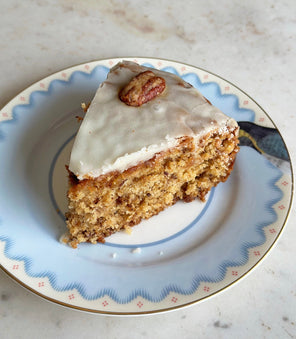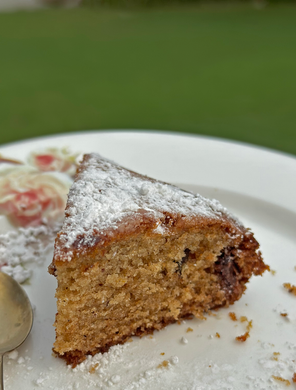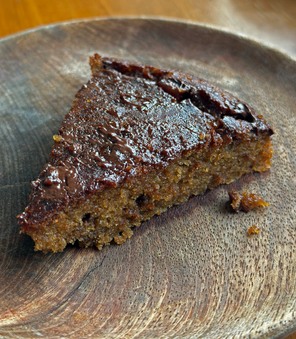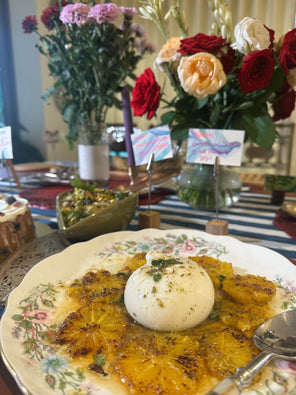Let them eat cake. – Marie Antoinette
In recent years there’s been an overload of extra frosting, buttercream, red velvet, rainbow cakes…
And truth be told, I am not a big fan of frosting – it’s really a bowl of saturated fats and a short cut to a severe sugar high! And more severely, the meaning of a really good cake often gets lost. I believe that any icing, glaze or frosting should be a small, light component of the cake, highlighting the main flavours and help the visual effect.
During my Middle East days, our second home was in London, where we spent our long summer holidays. Close to our apartment was an elegant (but of course) English teashop where we went almost daily for an afternoon tea. As kids, my brother and I would gleam in glee at all the pretty looking desserts, mini pastries and lovely glistening fruits. A light and airy sponge cake, with some fruit and English breakfast tea became a norm for us.
Teacake has been part of cultural history around the world. In the British days, teacake was referred to a bread type biscuit or a small cake with yeast and sometimes dried fruit (currants), had with some butter. In Northern America, teacake was more like a dense biscuit amongst the African slaves who made them with limited resources, flavoured with cinnamon, nutmeg and sugar.
In India, it refers to a sweetened sponge cake, most likely a concept influenced by the British Raj.
Then, of course, there’s the famous Marie Antoinette quote of, “Let them eat cake!” when she heard the peasants had no money for bread. Interestingly, in French, she had said, “Qu’ils mangent de la brioche,” which literally translated is, ‘Let them eat brioche,’ – brioche being a rich bread made with eggs and butter, both luxury ingredients.
These days teacakes are referred to dainty little cakes, resembling an airy sponge cake, topped with a drizzle of icing (note: not frosting), perhaps some fresh fruit or fruit flavouring, and sometimes accompanied with some fresh nutty cream on the side. It’s never too sweet; you can have it with the wonderfully hot Earl Grey or English Breakfast tea with some milk and sugar.
Are you salivating already?
(I am, even after having devoured two slices of this cake!)



So here, this lemon tea cake is a recipe that I have used for years. This was a carefully guarded secret as I combined a few recipes together to get the perfect one. The base of this recipe I use for many other cakes, which I shall share with you eventually.
This cake is slightly crumbly but moist sponge cake, soaked with a lemon and rose infused syrup, and decorated with some more dried roses. It goes perfect with a cup of tea and my Dad even eats it for breakfast!
You do not need any heavy butter frosting for this cake; it would be a crime. Nor do you need a side of thick cream or scoop of vanilla ice cream.
Trust me, it’s that good!
[yumprint-recipe id=’39’]
The Recipe
Serves
Ingredients
- Cake:
- 1 ¼ cup flour
- 2 tsp baking powder
- ½ cup soft butter
- ¾ cup castor sugar
- 2 eggs, room temperature
- 1 tsp vanilla
- ⅓ cup lemon juice
- 1 tsp oil
- 1 tbsp flour
- Syrup:
- ¼ cup castor sugar
- ⅓ cup lemon juice
- ¼ cup rose petals, dried
- 2 tbsp rose petals, dried, for garnish
Instructions
- Brush the cake tin’s surface area with the 1 tsp oil, using a silicone brush.
- Cover the oiled surface with the 1 tbsp flour, turning the cake tin over to remove excess.
- Cream the soft butter and sugar together.
- Add the eggs together and vanilla. Beat well.
- Sift the flour with the baking powder.
- Add the flour mixture and lemon juice, alternating between them 3 times.
- Scrape the sides of the bowl and pour into the cake tin.
- Bake in a preheated oven of 200°C for 25 minutes.
- Remove, and allow to cool within the tin.
- While cake is cooling, on low heat, dissolve the sugars in the lemon juice.
- Once the sugars are dissolved add in the rose petals for a few minutes, until the syrup has turned a light pink hue.
- Remove the cake from its tin, cool on a rack and then place on the serving plate.
- Prick the cake with a toothpick all over.
- Pour the warm syrup over the cake and soak.
- Once cooled, sprinkle some of the extra rose petals on top before serving.
- Store the cake in an airtight container.
- Cake stays well for 4-5 days (if it even lasts that long!)














